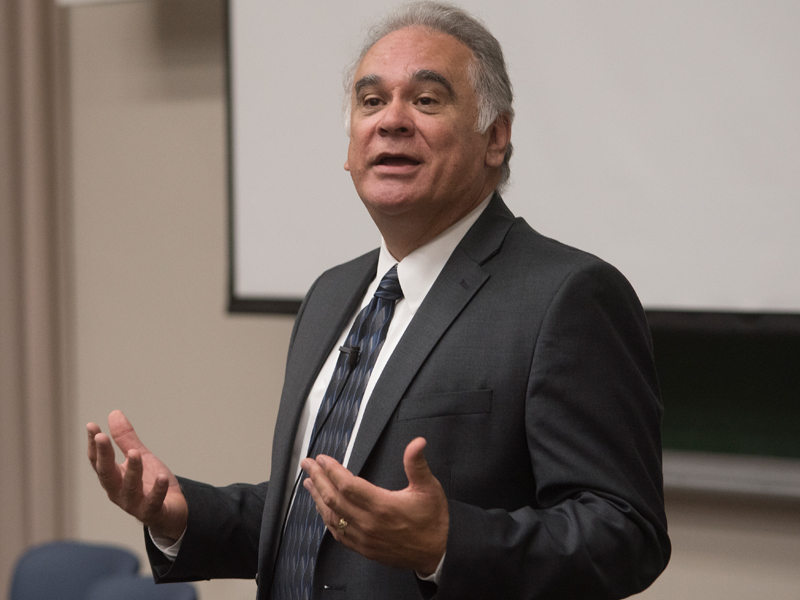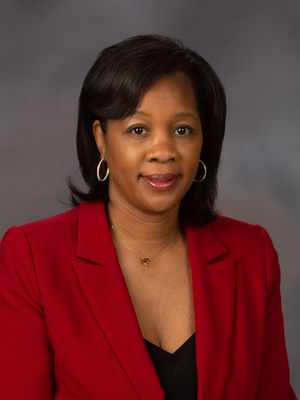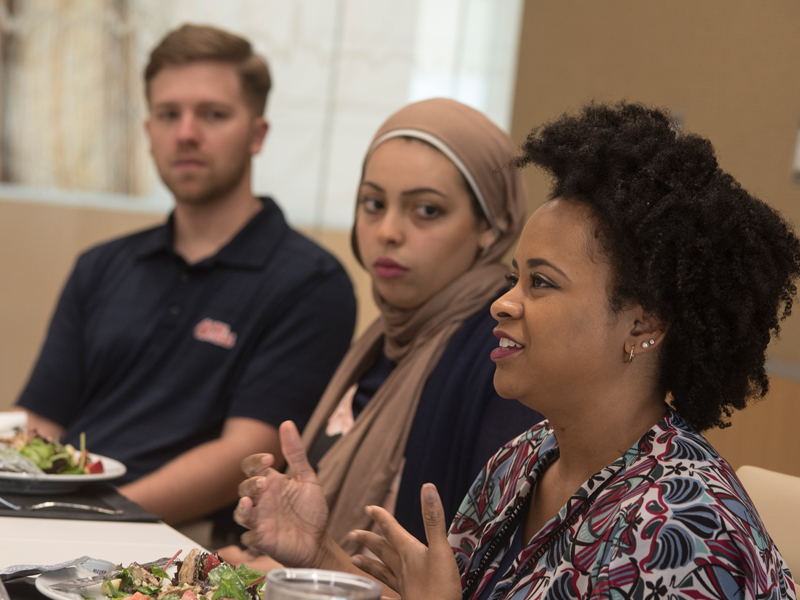AAMC diversity leader champions inclusion excellence

Each human being is made up of multiple identities. The different facets of their life experience, bound together, make up who they are as a person.
This richness of experience is what provides the true value of diversity and inclusion, not only in the complex problem-solving skills it brings, but also as a link to the communities researchers need to reach.
This concept is key to what Dr. David Acosta, chief diversity and inclusion officer of the Association of American Medical Colleges, described as the “culturally tailored” approach to reaching underserved communities with clinical research.
Formerly the senior associate dean for equity, diversity and inclusion at the University of California- Davis School of Medicine and associate vice chancellor for diversity and inclusion and chief diversity officer for UC Davis Health System, Acosta began his current role in the AAMC in February.

His visit to the University of Mississippi Medical Center campus Wednesday was the first in the Distinguished Lecture Series organized by the Office of Diversity and Inclusion. Dr. Juanyce Taylor, chief diversity and inclusion officer, said that her office hopes to hold the lectures in the fall and spring each year.
“Our goal is to have a high-level, national thought leader here on our campus to share real world experiences and to bring awareness to current issues that we face in the areas of diversity, inclusion and equity,” Taylor said.
Acosta also took time before the lecture to meet with the Associated Student Body president, School of Nursing student William Thomas, and the diversity co-chairs, medical students Kandice Bailey, Yassmin Hegazy and Zachary Long. He listened to their thoughts on inclusion as students at an academic medical institution and shared his experiences on other campuses.
Acosta’s lecture, titled Bridging the Cultural Divide in Academic Medicine through Inclusion Excellence, was co-sponsored by the Office of Research and addressed the national deficit in clinical trials involving minority populations. He described the lack of minority participation in clinical trials as a crisis situation.
“We’ve been working on this problem for 30 years, and we still haven’t solved it to this day,” he said, pointing out that fewer than 10 percent of minority populations participate in clinical trials.

Lack of minority participation in clinical research is a problem when trying to combat health disparities, because the research available – made up of clinical trials involving primarily the non-underrepresented population – does not always apply to populations of color.
Acosta said that he hoped his lecture would serve as a “catalyst for dialogue” that would continue in his absence.
Taking the concept of multiple identities, Acosta explained the value of having a diverse faculty is more than what research has shown: having a diverse workforce brings “divergent perspectives” together to solve complex problems. It is also bringing a richness in lived experiences that link back to the communities that clinical research needs to reach.
“The identities that people have within an institution, as opposed to the identities in the communities that they live in or came from, are often different,” Acosta said. “Some still live in the communities they grew up in. They are stewards for our researchers to have that conduit into the community because already they have built that relationship.”
Before the value of lived experiences can be fully appreciated, Acosta said, academic medical institutions must practice inclusion excellence.
“Diversity is important, but even more important is having the learning and workplace environment that nurtures and brings out the benefits of that diversity,” Acosta said.
Inclusion means providing a safe place where faculty and students feel empowered to reveal not only their identity as medical students and faculty but also the different facets of identity from their lives outside of academia.
Acosta shared the Foundational Principles of Inclusion Excellence developed by the AAMC to help organizations “achieve inclusion excellence in academic medicine.”
Those principles include the following:
- Demonstrating a commitment to diversity
- Recognizing and valuing authenticity
- Ensuring employees and students feel they are part of the fabric of the institution
- Practicing talent optimization
- Providing equal access to opportunity
- Making transparency and effective communication the norm
- Demonstrating mission and values aligned with a culture of inclusion
- Having a commitment to community engagement
- Expecting shared accountability and responsibility
Download a pdf of the full list of principles here.
Acosta said that through the relationships built within communities, researchers can begin to address other barriers that prevent minority involvement in clinical research including, but not limited to, historical trauma, fear of research and a lack of trust.


